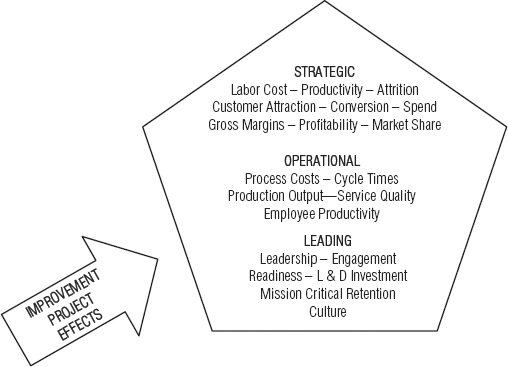HR REPORTING
The way you report your data is almost as important as the data itself. Remember, reporting is story telling. Make your report simple, interesting, and insightful. The essential component is that it should present actionable business-related data. Reports on HR’s headcount, budget, and number hired or trained are not what management wants.
I prefer an integrated approach to reporting. By that, I mean, when appropriate, the report should include strategic, operational and predictive, or leading indicators related to one another. A C-level executive should be shown how your project is of strategic importance. That is, how it affects corporate QIPS. Then you show the operational driver that you have solved and how it positively affects internal cost, time, quantity, quality, or employee reactions. That leads to strategic level gains. Finally and hopefully, you should report how this will affect one or more of the leading indicators listed previously. At that point, you are truly presenting predictive analytics. Exhibit 11.4 is a diagram of the concept. If you want to take it to the next level of prescriptive analytics, you need to run optimization analytics to show how the many variables are connected and interdependent.
Exhibit 11.4 Integrated Reporting

In this type of format management, one can see the simple connections. That is the most essential aspect, from HR’s ...
Get Win with Advanced Business Analytics: Creating Business Value from Your Data now with the O’Reilly learning platform.
O’Reilly members experience books, live events, courses curated by job role, and more from O’Reilly and nearly 200 top publishers.

